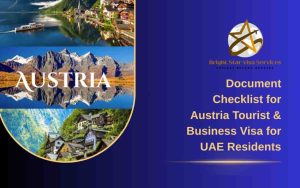So, you’ve decided to explore Europe—the cobbled streets of Prague, the Eiffel Tower lit up at night, the gondolas in Venice… sounds like a dream, right? Before that dream becomes reality, there’s one important step you can’t skip: applying for your Schengen visa. And yes, that means tackling the Schengen visa application form.
Now, don’t stress. The form might look a little intimidating at first, but once you break it down, it’s totally manageable. This guide will walk you through the entire process—one section at a time—in plain language. No legal jargon, no unnecessary fluff. Just what you need to know.
Let’s dive in.
What Is the Schengen Visa Application Form?

In simple terms, this is the official document you need to fill out when applying for a visa to enter any of the 27 countries in the Schengen Area. It’s used by embassy or consulate officials to evaluate your travel intent, background, and eligibility.
The form typically has 37 fields (might vary slightly depending on the country’s version), and it’s standardized across most member states.
Before You Start: What You’ll Need
Before you even begin filling out the form, make sure you have the following details handy:
- A valid passport (with at least 3 months validity from your return date)
- Travel itinerary
- Accommodation details
- Travel insurance info
- Employment or financial documents (to prove you can afford the trip)
Got all that? Awesome. Let’s tackle the form section by section.
Section-by-Section Breakdown
1. Personal Information
This is the basics—your full name, date of birth, place of birth, and nationality.
- Surname (Family Name): Exactly as shown on your passport.
- First Name (Given Name): Again, copy it exactly from your passport.
- Date of Birth: Use the European format: DD/MM/YYYY.
- Place & Country of Birth: Include both city and country.
- Current Nationality: If you’ve changed nationalities, mention your original one too.
💡 Tip: Don’t shorten names or use nicknames. Keep everything official.
2. Parental Information
- Father’s and mother’s full names: This is usually asked for identification and record purposes.
3. Identification Details
- Type of Travel Document: Usually “Ordinary Passport.” Only select “Diplomatic” or “Service” if you hold one of those.
- Document Number, Issue Date, Expiry Date: Double-check these—embassies are super strict on dates.
4. Contact Details
- Home Address, Email, and Phone Number: Make sure this is accurate—you may receive follow-up calls or emails from the consulate.
- If you live in a country different from your nationality, you’ll also have to mention your residency permit or visa.
5. Occupation and Employer Details
Whether you’re employed, a student, or self-employed, you need to provide:
- Your occupation (e.g., Software Engineer, Student, Freelancer)
- Employer or educational institution name and address
- Don’t forget to include a working phone number and email—this adds credibility.
6. Travel Information
This is where you explain why you’re traveling.
- Main Purpose of the Journey: Tourism, Business, Visiting Family/Friends, etc.
- Member State of First Entry: The country where you’ll be landing first.
- Intended Date of Arrival and Departure: Be accurate and realistic.
- Number of Entries Requested:
- Single entry: You enter once.
- Double entry: You enter twice within the validity period.
- Multiple entry: Ideal if you plan to visit several countries more than once.
- Single entry: You enter once.
✈️ Planning a Euro trip? A multiple-entry visa is your friend.
7. Previous Schengen Visas
If you’ve had any Schengen visa before, mention it.
- Date of issue and expiry
- Visa number (usually stamped in your passport)
Even if it was years ago, it helps establish credibility.
8. Fingerprints
- If your fingerprints were collected in the last 59 months for a Schengen visa, you can tick “Yes.”
- If not, be prepared for a biometric appointment.
9. Sponsor or Host Information (If Applicable)
If someone is inviting you (a friend, relative, or business associate):
- Provide their full name, address, and contact number.
Attach a copy of their ID or residence permit.
10. Travel Expenses
You’ll need to declare who is covering your costs.
- If it’s you: Tick “By the applicant himself/herself” and list sources like cash, credit card, etc.
- If it’s someone else: Provide their name and contact info.
💬 Honest answer? Always. Don’t guess or stretch the truth—it can lead to rejection.
11. Final Declaration
This is the part where you:
- Agree to not overstay your visa
- Confirm that all details provided are true and complete
- Give permission for your data to be processed
✅ Signature is mandatory here. Without it, your form is considered incomplete.
Tips for Filling the Schengen Visa Application Form
Now that you know the format, here are some bonus tips to make the process even smoother:
- Use capital letters if filling by hand.
- Don’t leave any fields blank. Write “N/A” if something doesn’t apply to you.
- Always double-check dates and passport details.
- Save a copy of the completed form for your records.
- Avoid typos. Small mistakes can cause big delays.
- If applying online (some countries allow it), make sure to download and print the signed copy.
What Happens After You Submit?
Once you’ve submitted the form along with supporting documents and attended your appointment, it’s a waiting game. Processing times vary by country and season, but on average, it takes about 15 working days.
While waiting:
- Track your application (most embassies offer this)
- Avoid making non-refundable bookings
When approved, the visa sticker will be pasted into your passport, and you’re good to go!
Common Mistakes to Avoid
Here’s a quick checklist of “don’ts” to help you steer clear of trouble:
❌ Inconsistent travel dates
❌ Wrong embassy (apply to the country where you’ll spend the most time)
❌ Skipping the signature field
❌ Not attaching supporting documents
❌ Last-minute applications (always apply at least 15–30 days before travel)

Wrapping Up
Filling out a Schengen visa application form doesn’t have to feel like decoding a cryptic puzzle. Take your time, be accurate, and stay honest. The more straightforward and complete your form is, the better your chances of approval.
So go ahead—print that form, grab a cup of coffee, and fill it out step by step. Europe is waiting.
Got more questions? Feel free to drop them in the comments—we’re happy to help!






